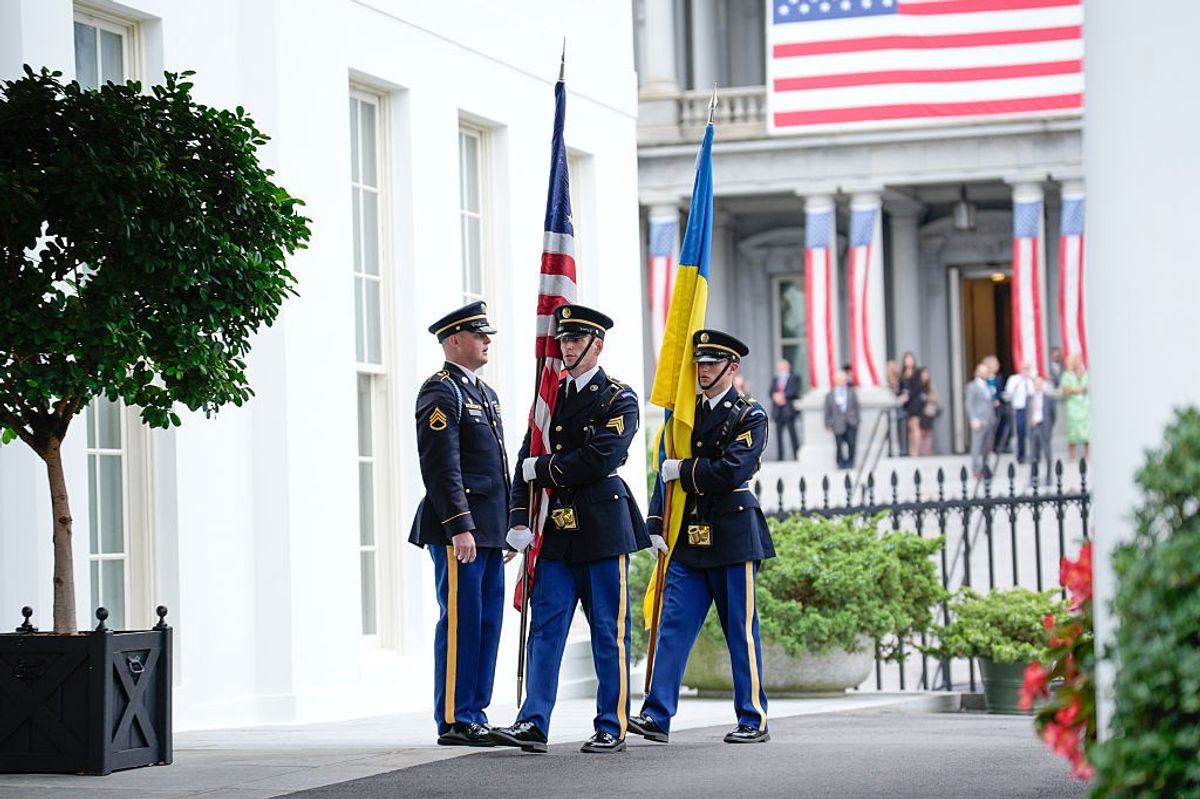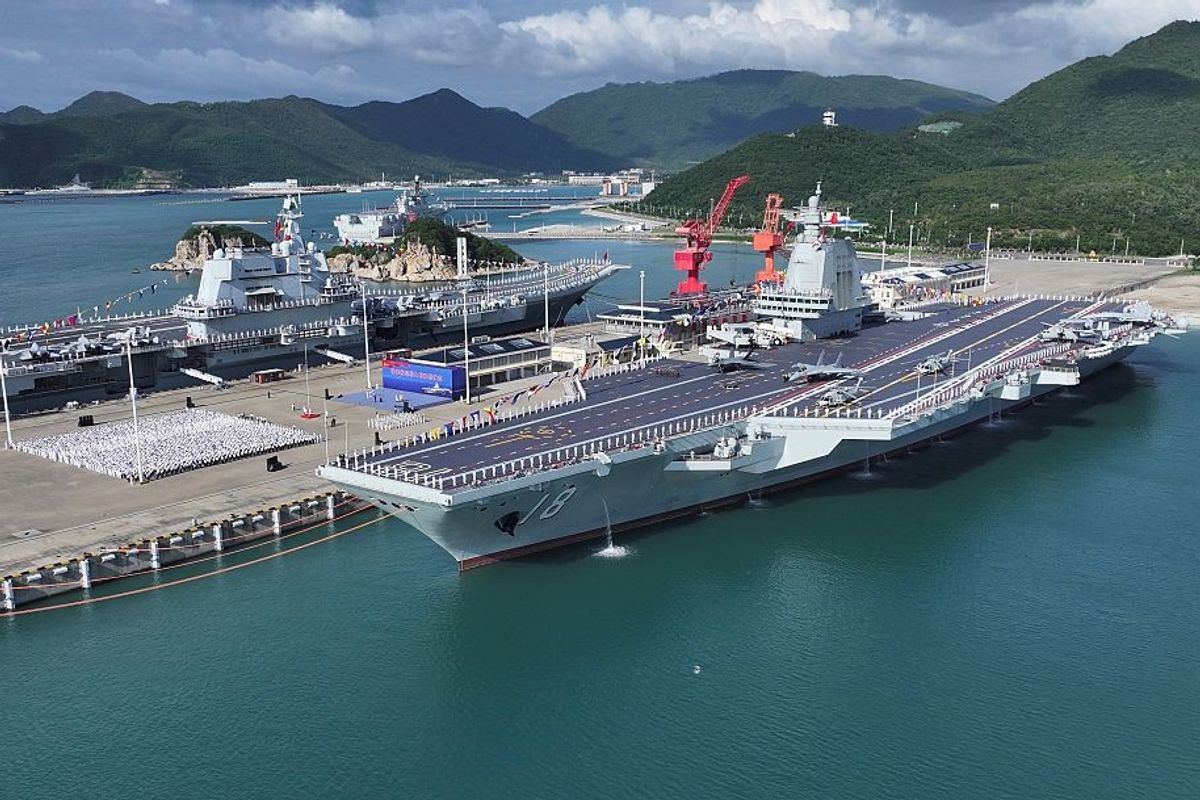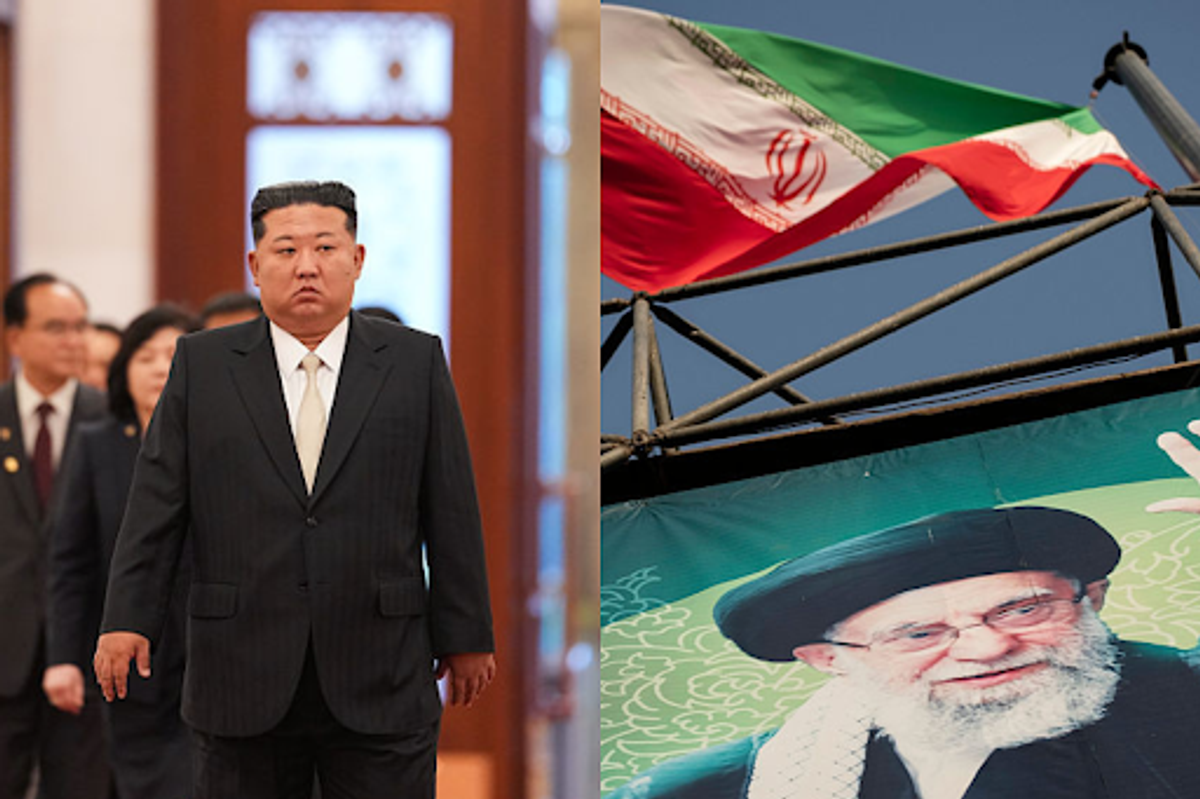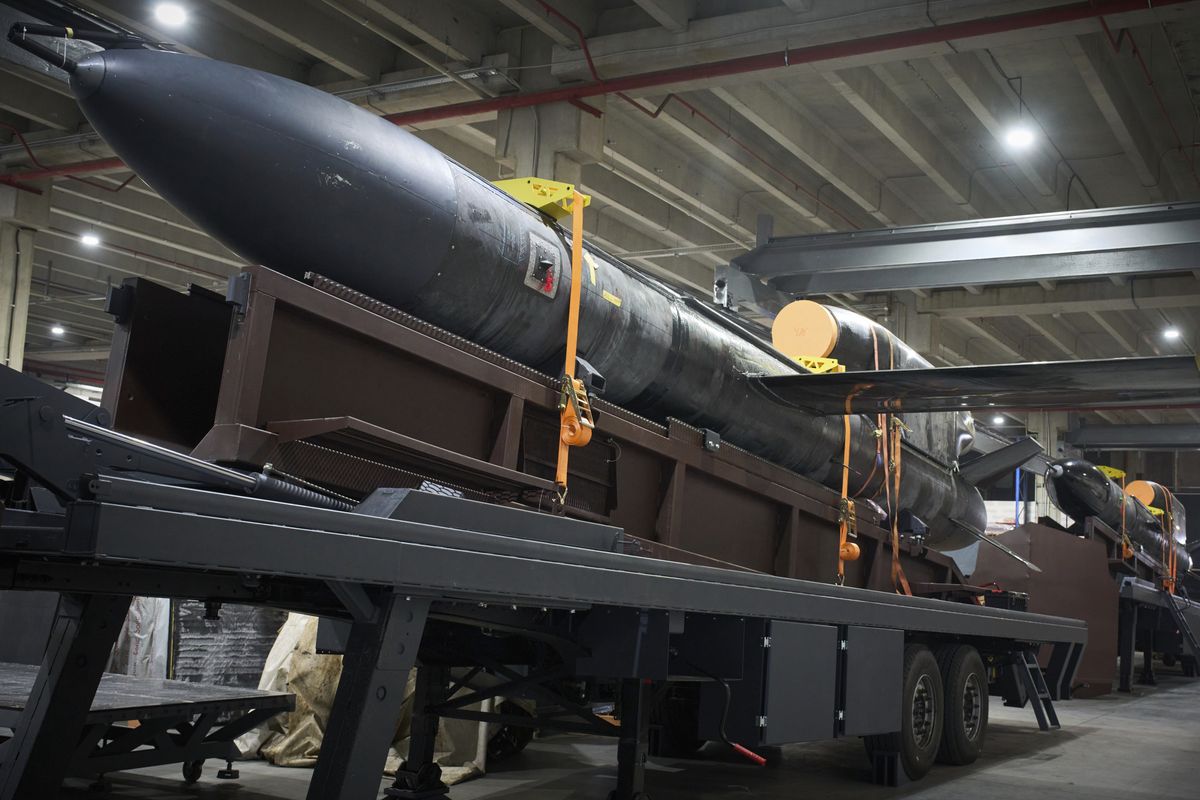EXPERT Q&A — The Pentagon has regularly warned in recent months about China’s rapid nuclear buildup, a potential sign of Beijing preparing for a “major-power war.” The Department of Defense has reported a steady pace of China's nuclear modernization and expansion efforts, from new missile silo fields to development of ballistic missile submarines. Other moves, including China’s reported construction of a new military command center on the outskirts of Beijing, complete with deep bunkers that could possibly weather a nuclear strike, suggest the country's leaders are incorporating the prospect of nuclear conflict into military strategy and doctrine.
The Federation of American Scientists (FAS) recently released its latest Nuclear Notebook report, which aggregates information from government agencies, news articles, social media and FAS analysis about the arsenals of nuclear armed states. The latest iteration of the "Notebook" is focused on China. While the report echoes DoD and media reports about the growth in China's nuclear arsenal, it also notes areas where the country still has a long way to go to match the United States and Russia.
Hans Kristensen, Director of the Nuclear Information Project at FAS and a co-author of the 2025 report, spoke with The Cipher Brief about its findings. He offered an assessment of China’s nuclear buildup and offered suggestions as to how the U.S. should view the overall state of the Chinese nuclear arsenal.
“We have to be really careful how you respond to this and think sort of grand strategy-wise, what this is going to accomplish?” Kristensen said. “A, is it going to solve the problem? Or is it going to create a new reality that is worse than the one we have?”
Kristensen spoke with Cipher Brief Editor/Writer Ethan Masucol. Their conversation has been edited for length and clarity.
The Cipher Brief: The report says that there are approximately 600 Chinese warheads right now. Can you put that into context in terms of China's expansion of its arsenal in recent years?
Kristensen: Since the 1960s, when China first developed nuclear weapons, China has relied on a very small nuclear arsenal. They've had no more than just over 200 or so warheads. Initially they focused on regional missiles. Then they felt that their intercontinental capability needed to be beefed up a little, but there was a very small inventory of intercontinental ballistic missiles, just about 18 to 20. Then things started to change. They started feeling that that force was more vulnerable. And so in the 1980s, they decided to move toward a development of a solid fuel intercontinental missile. The first mobile form came out in 2006-2007. Then they started building up that force; it was still relatively limited, just over 100 of them or so, but still a significant change to what they did before.
Then about four or five years ago, we started seeing some dramatic new changes. They started building three large missile silo fields up in north-central China. Each of them has about a hundred silos for nuclear missiles. So they're rapidly expanding the nuclear arsenal. This is what is most predominantly responsible for the increase in China's nuclear weapons. Since 2018, the Chinese have increased their nuclear weapons arsenal, the number of weapons that they are believed to have, from just over 200 to now just around 600.
The Cipher Brief: I want to turn to China's “nuclear triad” as well, because the number of warheads is just as important as its delivery system for those forces. It seems like that's a bit of a work in progress in China.
Kristensen: Yes, very much so. People like to use the word “triad,” but we have to remember that in China, that comes with a huge grain of salt because they don't really have an operational triad in the sense that the United States and Russia have it. There are fully developed, fully balanced nuclear arsenals [in the U.S. and Russia.] The Chinese, as you say, have a work in progress.
Their submarine force is relatively small, about half the size of those that the Russians and the Americans operate. They have about six of them for now; they're all down in the South China Sea at a base there. The ballistic missiles do not have enough range to be able to target all of the continental United States from there. And this is a relatively noisy class of submarines that is about as noisy as some of the Soviet submarines that came out in the late 1970s. So it's unlikely that that force would survive long in a sort of serious conflict with the United States, for example.
The bomber force is a new addition, because China originally used its bomber for nuclear weapons back in 1960s and ‘70s, but then it got mothballed. It's only about four or five years ago that they decided to reactivate the nuclear mission of the bombers. And so since then, they have been working on upgrading their old H-6 bomber, which is not an intercontinental bomber — it's a regional bomber. They’re equipping that with an air-launched ballistic missile, a big missile hanging on its belly that is believed to have a nuclear capability. But we're only talking about one base so far, and they're still building up the capacity and learning how to operate this and doing all these things. So it's far from a potent or capable force, if you will. So yes, it's a work in progress.
The Chinese are working on developing an intercontinental range bomber. But it's still at the developmental stage. There are lots of rumors about it, but nothing substantial yet. So it seems to have been delayed. We don't know exactly when it's supposed to come out.
The Cipher Brief: The report says China is not a nuclear peer of the U.S. With all the headlines about China's nuclear and military buildup, your report suggests it's definitely not at the same level of U.S. capabilities.
Kristensen: Yes, not at all. When dramatic things happen with nuclear states, there's very quickly a tendency to hype it, to get super excited about it and start using big names and words. And so that is happening for the Chinese, both with the so-called “triad,” but also with the claim that it's a peer or even a near peer to the United States. That is all relative.
They're not a peer in the number of nuclear weapons in their stockpile. They're not a peer in the total number of strategic launchers. They're not a peer in strategic bombers. They're not a peer in ballistic missile submarines. And they're not a peer in the sophistication of their nuclear command and control system and the ability of what that system and its early warning system can do.
The only place where you could claim there is a degree of parity is in the number of ICBM launchers. But that's because they build all these launchers in the ground. That doesn't mean that they are all loaded with missiles or have warheads on them.
The Chinese have a regional force of missiles that have nuclear capability. That is an area where they have an advantage compared to the United States, over in that part of the Pacific. But you have to remember that those weapons exist because some of the targets that the Chinese war plans are aimed against are in the region. They're nearby. They don't need intercontinental weapons to hit those. So they have regional missiles to do that.
The United States does not have missiles on the ground out there with nuclear capability. But it has a significant force of air-launched cruise missiles and gravity bombs on long-range strategic bombers that would be used in the same way, essentially.
Experts are gathering at The Cipher Brief’s NatSecEDGE conference June 5-6 in Austin, TX to talk about the future of war. Be a part of the conversation.
The Cipher Brief: So with the picture that you've painted of China's force being more regionally focused, can you talk about how that factors into their nuclear doctrine, and how they think about using nuclear weapons?
Kristensen: The Chinese have historically been relaxed, you could say, about their nuclear arsenal. Modest, and low ambition. They were not a force that was supposed to be a nuclear war-fighting force. There was supposed to be a secure, retaliatory capability that China could use to stop other countries or prevent other countries from blackmailing China. They saw that force as something that didn't have to be very big as long as they had enough to do a significant amount of damage. That was enough.
Now under [Xi Jinping], they have changed their mind. They are clearly departing from what used to be the minimum-deterrence philosophy. Of course, they will still call what they have minimal deterrence, no matter the number. But it's clearly very different from what they had in the past in terms of numbers and capabilities.
What is still quite unclear is how that affects China's nuclear strategy and its nuclear policy. The force they have is supposed to be what they call a retaliatory counter-attack force. If China's attacked and it gets to a level where they have to use nuclear weapons, they would use them in response to an attack on China. But you can do more with more precise weapons. You can also do more with ICBMs that have solid fuel that can launch quickly out of their silos versus the old types that had liquid fuel.
The force itself can have an impact on how the Chinese military and leadership thinks about what you can do with the forces. But it's still unclear what they're doing with that strategy in that sense.
On the policy, they traditionally had policies like the no-first-use declaration, and also a policy that promises that they will not use nuclear weapons against nuclear weapons-free zones or countries that do not have nuclear weapons. Those two elements are under stress right now. The no-first-use appears to come with some caveats. I personally had conversations with Chinese military officials and attaches and asked them the question: If the United States attacked China and used only conventional weapons to knock out Chinese nuclear forces, would China then still not use nuclear weapons? And they were all very clear that absolutely they would use nuclear weapons. If there was an attack on the nuclear force, they would consider it a nuclear attack and would not be constrained by the no first use. So I think the no-first-use is more about, we will not attack something out of the blue. We won't initiate a nuclear aggression, so to speak.
Their pledge not to attack or threaten to attack nuclear weapons-free zones has also come under stress because last year, you might remember they did a highly publicized test launch of a land-based ballistic missile from Hainan Island down in the South China Sea. They fired it into the Pacific and it landed north of French Tahiti. The impact point was inside the South Pacific nuclear weapons-free zone. That in and of itself raises some questions; either they made a mistake or they're trying to blur the lines.
Overall, I would say both these policy developments and the nuclear force developments are creating a lot of uncertainty about what the Chinese intentions are and the direction of Chinese nuclear strategy.
The Cipher Brief: I'm assuming the specific contingencies that are top of mind in Beijing when it comes to nuclear forces are Taiwan and South China Sea.
Kristensen: Taiwan is one of them for sure. That is one of the areas where the United States for the longest time has thought that there was a real possibility that nuclear weapons could come into use. It’s ironic that that does not just concern the Chinese nuclear weapons use, but also concerns American nuclear weapons use, potentially. So that's a regional context strategy, if you will.
There's also, of course, a part of the strategy that has to do with sort of more direct strategic engagement with the United States, where weapons are fired against the homeland, not just used in a region. So there are those two levels to how both the Chinese and the United States think about the potential use of nuclear weapons.
The Cipher Brief: We've said that China’s nuclear forces are a work in progress, and there's some uncertainty as to their doctrine. I assume that doesn't mean this is not a threat that the U.S. should be ignoring.
Kristensen: Right, absolutely not. The question is how do you respond to it? One, what is necessary to do to respond to it militarily? And two, what is the smartest way to respond to it in terms of what kind of countermeasures you trigger on the Chinese part? You could imagine if the United States said, well, we need to increase our nuclear arsenal, the number of deployed weapons on our systems. You could imagine what would happen is that the Russians would look at the United States and say, you're increasing your number, we will also increase our number of nuclear weapons. And then the Chinese would be looking at the United States and Russia and say, Whoa, these two powers are both increasing their nuclear weapons. Maybe we have to revisit our modernization program and increase it further.
But you could also imagine that, for example, if the United States decided, Well, we need to have some new tactical nuclear weapons or shorter-range nuclear weapons out in the Pacific, closer to China. The Chinese would not react to that by saying, we're sorry, we didn't mean what we're doing. They would most likely rather respond to it by countermeasures. And some of those countermeasures could potentially be that they also start introducing new types of regional nuclear weapons in order to counter that.
So we have to be really careful how you respond to this and think sort of grand strategy-wise what this is going to accomplish. A, is it going to solve the problem? Or is it going to create a new reality that is worse than the one we have? This is really a delicate discussion and one that's still ongoing here in the United States.
The Cipher Brief is committed to publishing a range of perspectives on national security issues submitted by deeply experienced national security professionals.
Opinions expressed are those of the author and do not represent the views or opinions of The Cipher Brief.
Have a perspective to share based on your experience in the national security field? Send it to Editor@thecipherbrief.com for publication consideration.
Read more expert-driven national security insights, perspective and analysis in The Cipher Brief












